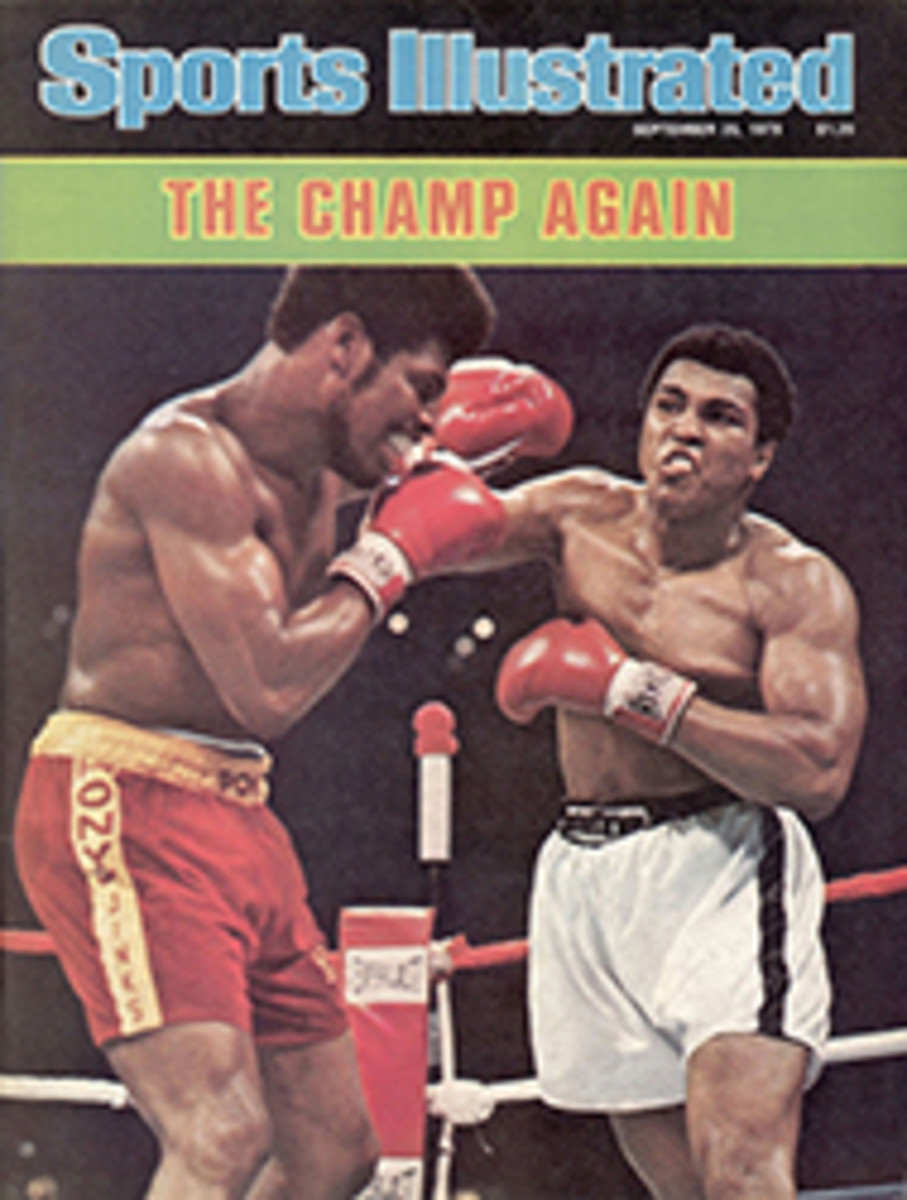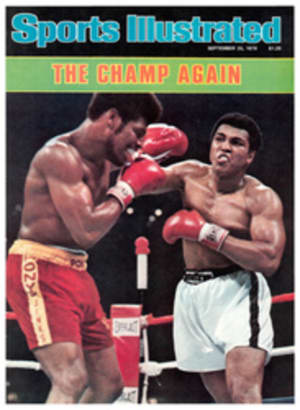
A hard catcher to nab
This kid lived in every neighborhood. He was short and chubby, and when it came time to play ball, there was only one position for him. "You catch, Butter-ball," the others would tell him. "Knock down the pitches, and if somebody tries to score, block the plate with your blubber." Even if he made it to the big leagues, the kid carried with him a nickname—such as Yogi—more suggestive of his low center of gravity than his skills.
There are still a lot of squat, lumbering catchers in the majors, but no longer do men matching that description hold a monopoly on the position. Just look at last week's statistics. In the American League, Boston's Carlton Fisk, who is a well-proportioned 6'2", 220 pounds, was battling for the league lead in doubles with 39. No catcher has ever led his league in this category. And in the National League, John Stearns of the Mets was basking in the afterglow of his 24th stolen base, the most ever by a National League catcher.
Of the two, Stearns' accomplishment is the more notable, because doubles are as much a result of power as of speed. But catchers—even today's sleeker, faster ones—do not customarily steal bases. What makes Stearns' feat all the more remarkable is that he was not given the go-ahead to steal on his own until the season was half over.
"I didn't want him to steal until there were two outs," says Mets Manager Joe Torre. "I don't like to give guys their head until they've proved what they can do." The contentious Stearns was not pleased. "We had some discussions—in some circles they are called arguments," says Torre. "But I stayed firm. I tend to be particularly tough on catchers, because I was one myself, and I thought he wasn't paying enough attention to his catching."
By July 13 Stearns had stolen eight bases in two-out situations, and Torre reluctantly eased up on the reins. Stearns began stealing at the rate of a couple of bases a week, and on Sept. 7 he swiped his 24th in 31 attempts to break the unofficial modern "record" established 76 years ago by the Cubs' Johnny Kling. (Baseball does not keep a listing of stolen bases by position, but the game's historians have researched the matter thoroughly. Thus it is correct to say Stearns broke a record, though it is one that does not appear in the books.) Next year, health and Torre permitting, Stearns will take aim at the modern major league "record" of 30, set by Ray Schalk of the White Sox in 1916.
At six feet and 185 pounds, Stearns was big enough—and fast enough—to play defensive back for Colorado and be drafted in the 17th round by the Buffalo Bills. Stearns refuses to consider it a handicap that he does not have the whippet speed of some leaner players, such as Omar Moreno, Pittsburgh's league-leading base stealer.
"Stealing is basically getting the jump, not speed," he says. "You get the jump by knowing the count and the pitch to steal on. If a pitcher gets ahead on the count, there's more of a chance of a pitch-out or a high fastball waste pitch—the easiest kind for a catcher to throw you out on. If the pitcher's behind on the count, you get a better pitch to go on. When I'm on base, I try to deke the pitcher. I make him throw to first and nonchalant it going back. I try to get there standing up. That way he'll be surprised when I steal. Meanwhile, I study his move home like a hawk. Does he tip it off here"—he taps a visitor's shoulder—"or here"—he pokes a knee. "As soon as I see the tip-off, I'm gone."
Stearns was not talking like a catcher, but then he was never supposed to be one. "I was an all-league shortstop at high school in Denver," he says. "During my senior year the catcher got kicked off the team, and the coach said, 'It's got to be you, John. You're the best athlete on the team.' Actually I caught little until my junior year in college, and I only caught then because scouts told me to."
The scouts obviously liked what they saw. In 1973 the Phillies made Stearns the No. 2 choice in the draft. "They gave me a good bonus—$50,000-$60,000—and you'd have thought they had sensible plans for me," Stearns says. "A realistic schedule would have been: A-ball the first year; Double-A or Triple-A the second; and the big leagues the third, if I was ready."
Instead, Stearns was, as he says, "jacked around," going from Double-A to A to Triple-A. In December of 1974, over the objections of Toledo Manager Jim Bunning, the Phillies sent Stearns to New York in a six-player deal involving the Mets' relief ace, Tug McGraw.
The Mets did not seem to have any clearer idea of what to do with Stearns than the Phillies had. Though voted the outstanding rookie in New York's 1975 spring camp, he played only 59 games with the Mets that season. "My game was hurting and they had me at backup catcher—at age 23," Stearns says disgustedly. Then, midway through the 1976 season, Stearns took his future into his own hands and asked to be sent back to the minors. The Mets agreed, and he hit .310 in the International League. Team officials were so pleased by his performance that they traded Jerry Grote, perhaps the best defensive catcher in baseball, to Los Angeles and turned the job over to Stearns for the 1977 season.
For once a Mets' decision did not backfire. Stearns is hitting better than most catchers (.269) and with some power (15 homers and 70 RBIs). His arm is respected, and for good reason: he has thrown out 40% of would-be stealers. Only Jim Sundberg of the Rangers has thrown out close to 50%. And Stearns may lead the league in true grit. On June 30, in the season's most resounding crash, Pittsburgh's 6'5", 235-pound Dave Parker attempted to bowl over Stearns, who was blocking the plate with two out in the ninth and the Mets ahead by one run. Parker wound up with a broken cheekbone and spent 15 days on the disabled list. He still dons a football-type face mask every time he gets on base. After making the tag, Stearns flew 10 feet through the air, hung on to the ball and played the next night. No wonder his teammates call him Bad Dude.
His nickname reflects his cockiness and lack of tact as much as his physical toughness. Last week, for example, a passed ball was called on Stearns. He turned around, hands on hips, and glared up at the official scorer in the press box. The next night Stearns glanced around the last-place Mets' clubhouse. A couple of dogs were chasing each other, knocking down chairs. An obscenity was scrawled on the blackboard. "What we need," growled Stearns, "is hitting, pitching and fielding."
Stearns can be equally rough-edged on the field. Behind the plate, he drops more balls than he should. At bat, he uses his body too much and his wrists too little. Even on the bases he sometimes acts as if he were blitzing the quarterback. He once tried to steal home with two outs and a two-strike count. "As a player, I'm just scratching the surface," he says.
Jerry Koosman, dean of what passes for the Mets' pitching staff, is more optimistic. "He's shown as much improvement as any catcher I've known," says Koosman, "especially in his aggressiveness and thinking. He still tries to catch pitches in the dirt instead of blocking them, and he sometimes replays his last at bat when he gets behind the plate instead of concentrating entirely on catching, but he's going to be a good catcher."
In the future, will catchers be more like the agile Stearns? "I don't think so," says Torre. "They may start off with speed, but their muscles get knotty as they get older." Stearns, in his contrary way, disagrees. "It's true that there aren't many of us who run well," he says. "The best are guys like Bench and Simmons, big strong men who can hit with power. But the game's always changing. As it evolves, why can't it evolve for the better?" He pauses, savoring the thought. "I can improve on the breed."
PHOTO
Stearns' quickness is evident in his fielding, too, as he shows in getting out to field a bunt by Cub Dennis Lamp.

